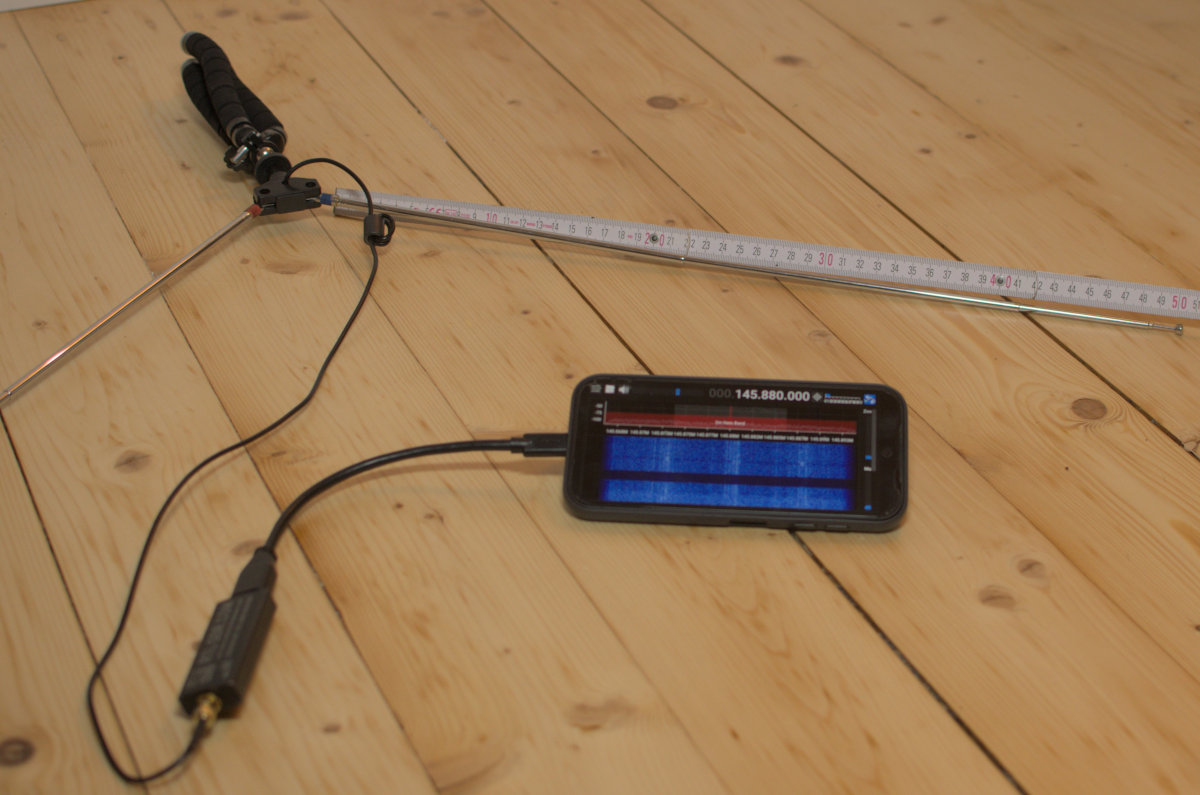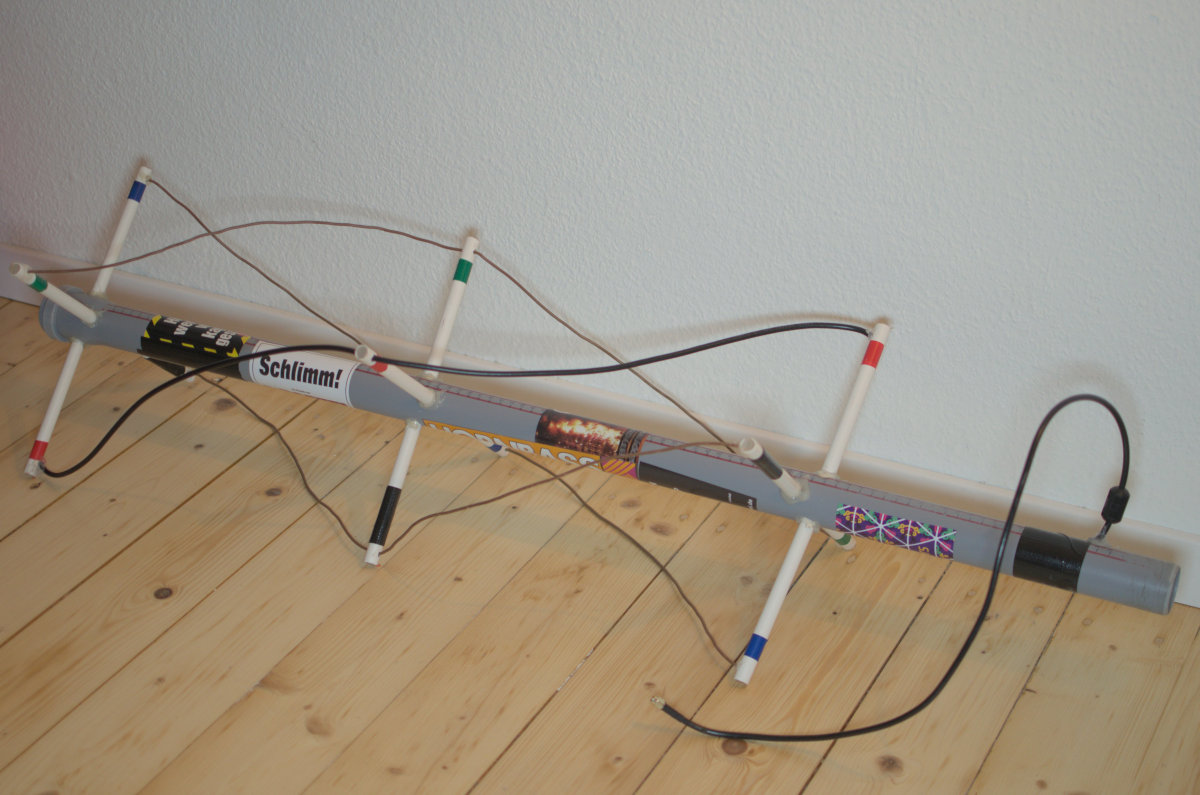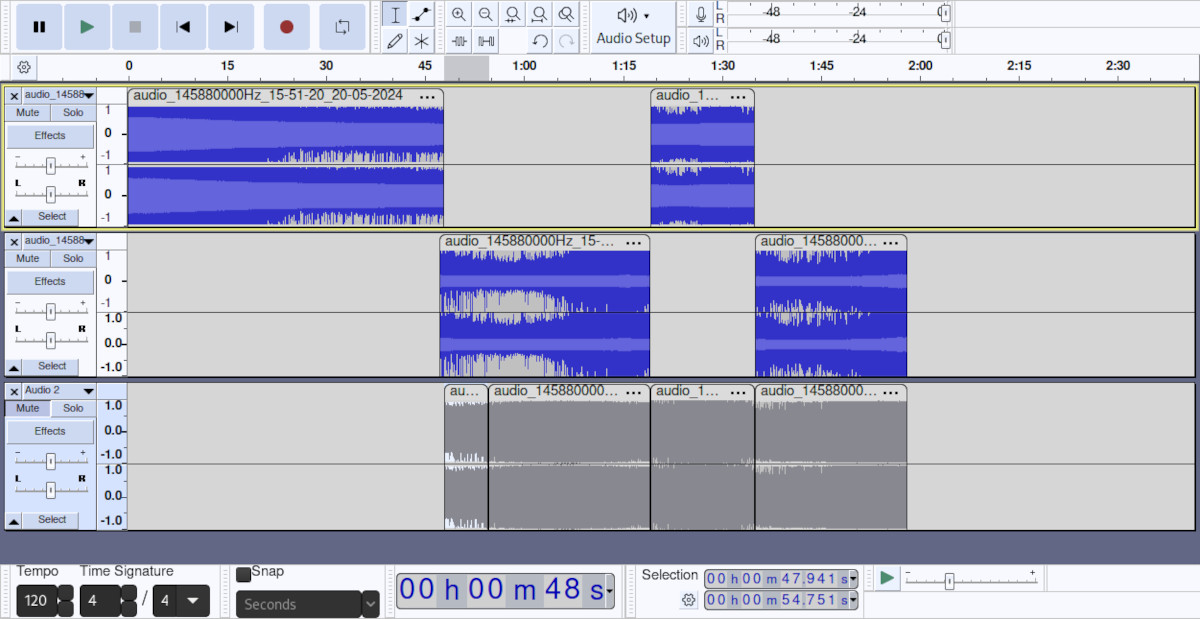Receiving SSTV images from SONATE-2
#RadioIn march 2024, the Julius Maximilian University of Würzburg launched a cubesat called SONATE-2 (SOlutus NAno satelliTE 2) with a ham radio payload. The mission includes transmitting images using an analog SSTV signal on several occasions. Information about the downlink frequency and modulation, as well as the transmission schedule can be found on the projects page with information for radio amateurs.
This satellite did a pass over my location which coincided with the SSTV transmission scheduled for 20.05.2024 13:52:00 UTC. I made two simultaneous recordings of the signal. The first setup consisted of a V-Dipole antenna build from the rtl-sdr blog dipole antenna kit connected to an rtl-sdr and my phone running SDR++ and the second setup used a QFH antenna build for NOAA-APT signals connected to an AirSpy mini and my laptop.
Both setups used narrowband FM centered around 145.88 MHz with a bandwidth of 12500 Hz. While the signal was clearly visible in the waterfall, the images resulting from both recordings were suboptimal. For the recording from the V-Dipole antenna, the image is rather noisy and QSSTV messed up the synchronization for the recording from the QFH antenna - resulting in a distorted image.
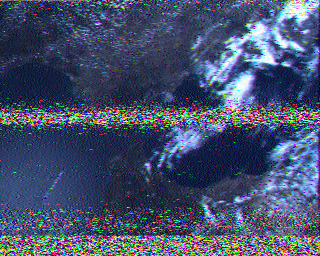
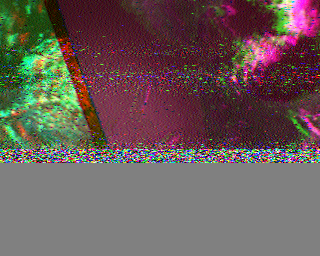
After a bit of fiddling in Audacity - which was mostly trial and error, both recordings could aligned and combined into a single sound file using the better parts of both.
Finally the final image is less noisy. Still missing is the beginning of the transmission, but in the top left corner a yellow box with the call sign DP0SNX of the satellite can be imagined.

The image was captured using the wide-angle color camera of the satellite and shows the Strait of Gibraltar. Of course that was not a live image, instead it seems to be the first high resolution image captured by the satellite several weeks earlier.
